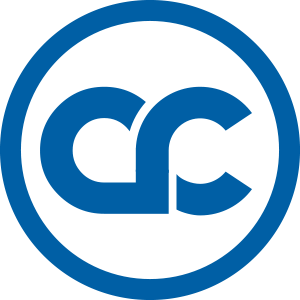Most of what you know about copyright is probably wrong. So many myths and inaccuracies seem to have built up around the different kinds of intellectual property and are repeated so often they become fact. Add to this the internet (a dangerous source of information at the best of times, let alone where legal matters are involved) and the confusion of different countries having completely different laws and you have an unhealthy mix of near-facts and confusions between copyright, trademarks, patents and other protections.
Searching for even simple facts about IP (Intellectual Property, the umbrella term for describing your creations) can land you on a forum where one person authoritatively says one thing, the next person down says the complete opposite (but with the same authority) and the third person says they are both wrong and links to a site which gives correct information…but for a different country to yours.
So, let’s clear it up!
Copyright
Probably the most misused term of all. How many times have you heard someone say “I should copyright that” or “I wish I’d copyrighted that idea – I’d be rich”. The truth is, it doesn’t work like that. Copyright is automatic. Yep – you don’t have to do anything except create a work of art, poetry, music, etc. By creating something, copyright for it is created at the same time.
You don’t have to
- Put a © symbol on it.
- Put a date on it.
- Put your name on it.
- Register it anywhere.
- Pay anybody.
You do have to
- Create something original.
If you really want, you can
- Add the ©, date add name of holder.
Simple!
Copyright in the UK generally lasts for 70 years after the creator’s death, although there are differences depending on what the item is. A sound recording’s protection lasts 70 years from its publication and a film is covered for 70 years after all of the main creative contributors have died (director, writer and music composer). For some reason, radio and television programmes are treated differently and are only covered for 50 years after their first broadcast.
After the copyright expires, a work enters the ‘public domain’ and is up for grabs for anybody to do with as they please. You can record your version of an old song, print t-shirts with an old work of art, publish an anthology of old poems…whatever. Just remember that anybody else can as well.
If you own the copyright in a work you can grant a licence for others to use it under your terms, or you can completely sign over the copyright to someone else. Many artists and authors have suffered in the past from publishers insisting they take over the copyright of a work they are printing – but keeping hold of your copyright can, in some cases, allow a work to be licensed several times and provide a lifetime’s income.
The ‘70 years after death’ rule also means that copyright in a work will need to be held by somebody else other than its creator at some point (due to the creator being, well, dead). This means that you can actually inherit copyright if the creator leaves it to you in their will. Interesting complications could arise if an artist bequeathed you a painting but not the copyright to it…but that’s a whole new article.
Design Right
This is pretty similar to copyright but it protects the shapes of objects or the way different objects are put together to create something else.
Again, it’s automatic but it only lasts up to fifteen years after its creation (or ten after it was first sold, if that happens before).
It is possible to register designs for further protection and you can also submit flat work like a repeating textile pattern design for extra coverage on top of copyright. It’s advised to photograph and document the creation of an object and keep the dated details with a solicitor to help with any future disputes.
Trade Mark
This is to protect a brand, but it’s not just about logos – you can trademark a slogan or a product name. It also covers non-printed branding. For example, an advertising jingle or catchphrase can count as a trade mark.
Trademarks are a bit like copyright in that you don’t strictly have to register anything in order to bring a case against somebody for copying it. However it is far easier to defend against unauthorised use if you go through the proper application process to register it. Without registration you must resort to ‘passing off’ or other laws to stop somebody using your mark. However once registered, the trade mark laws are far more clear-cut.
If you pay the fee, establish your uniqueness and your trade mark conforms to the rules (www.gov.uk/how-to-register-a-trade-mark/what-you-can-and-cant-register) without opposition from anybody, you are registered and allowed to put the ® symbol next to any visual version of your trade mark when it’s displayed. Unregistered trademarks can be labelled ™, however, this highlights the fact that the trademark is unregistered – possibly counterproductive!
A registered trade mark only lasts for ten years. After that you must re-apply.
Patent
This is the most complicated protection and usually the most expensive.
Patents cover inventions rather than designs and what you are protecting must be something unique that can be actually made or used. You can’t patent concepts, processes or creative work and the rules around software are way too complex for this article.
The application process involves specialist legal advice and thorough checks need to be made that your invention is not already patented (this is less clear-cut than you might think as companies often patent items and then never produce them, so the only way to learn of their existence is in a patent search). The process is time-consuming (up to five years) and therefore expensive as it inevitably involves engaging agents and solicitors along the way. You must not reveal your invention to the public before you apply (non-disclosure agreements are common if other people are required be involved), but once the process has started you can release details and mark your invention as “patent pending” or “patent applied for”. This gives you the chance to engage in advance marketing or to talk to funders.
A patent lasts twenty years. However from year five, a fee must be paid each year to keep it live. The fee rises each year (currently £60 in year five, rising to £610 in the final year). This, presumably, accounts for the expected growth in the value of the invention.
Also, as with other kinds of protection, patent infringements are not automatically punished – there are no Patent Police cruising around looking for evil copycats. It’s completely your responsibility to discover and bring a case against any violations of your IP…and it’s all done at your own cost. What a patent will do is increase your chances of success in any action immeasurably, as most of what will need to be done to prove your ownership and rights has already been done.
Interestingly, there is no symbol to put on a patented item. You’d expect it would be a ℗ to match ® and ©, but you’d be wrong. The ℗ symbol actually denotes “phonographic copyright” and is an extra copyright symbol often added to recorded music.
In the UK, it also not compulsory to mark your product as patented or to show the patent number.
Combinations
Complete protection of your intellectual property often ends up needing a combination of the above methods. For example, you could register the look of a new toy with design right and also patent its internal mechanisms. When marketing it you would use trademarks to cover its brand and advertising material, some of which would already be covered by standard copyright. This is probably why there is so much confusion, but the different protection mechanisms all have their own specific uses and don’t really overlap as much as they seem to.
More
This article covers the basics in an attempt to correct common misunderstandings and to try to simplify things a bit, but intellectual property and the protection of it is a massive subject. We also only covered the UK. Every country has similar but slightly different versions of the same laws, so don’t expect the above to apply everywhere.
There are also other forms of IP protection. More detailed info can be found at the British Library’s Business and IP Centre or the IP section of the UK Government site.













































